10 Best Famous Monument in Colima | Historical Building in Colima

- By
- Aparna Patel
- |
- 15 May, 2023
- |
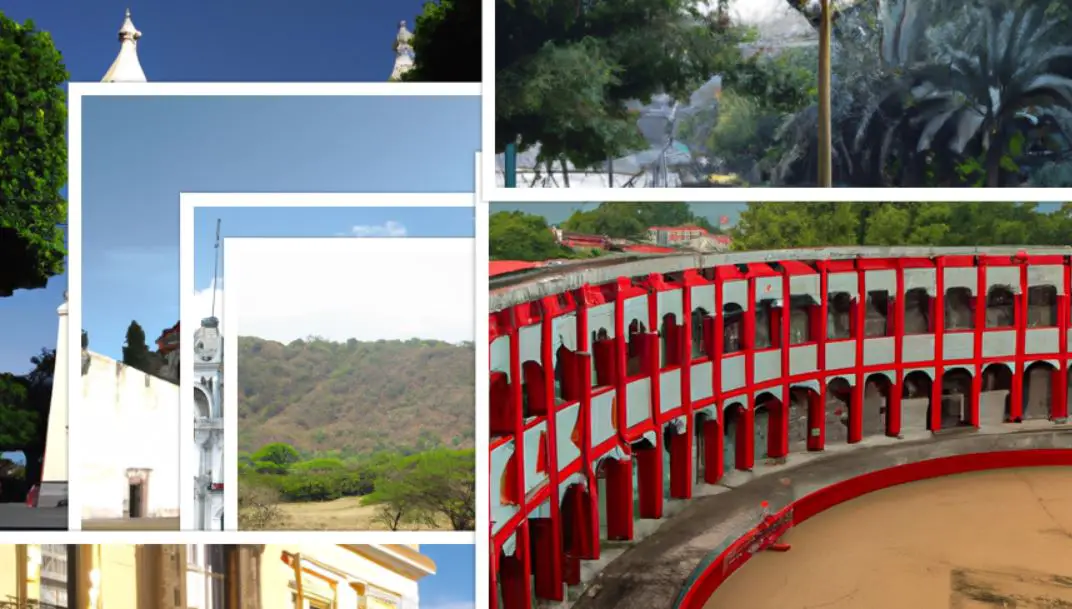
Colima, a region in western Mexico, is home to some of the most famous and significant monuments in Mexico. For centuries, travelers have come to visit its awe-inspiring monuments which bear witness to the history of the state and the country in general. From the ancient Aztec Ruins of La Campana to the impressive cathedral dedicated to St. Francis of Assisi, Colima is full of awe-inspiring monuments that make it one of the most visited tourist destinations in Mexico.
In this blog, we explore some of the famous monuments and historical buildings in Colima that are sure to leave travelers in admiration. Read on to uncover the mystery, beauty and grandeur of the most breathtaking historical sites in Colima.
10 Famous Monuments And Historical Buildings To Visit
1. Las Peñas Blvd
Las Peñas Boulevard is a shopping area located in Colima, Mexico. It is comprised of several shops and restaurants, with a variety of offerings ranging from international cuisine to traditional products, jewelry, clothing, and more. The Boulevard is a popular spot for locals and tourists alike, especially during weekends and holidays.
Despite its small size, there is plenty to explore here, from its architecture to the many shops and restaurants. In addition, the Boulevard features a large fountain and colorful sculptures, making it an ideal place for a leisurely stroll or a relaxing afternoon.
2. La Briseida Conservation Unit, Mexico
La Briseida Conservation Unit is a natural protected area located in the Mexican state of Colima. The conservation unit was established in 2000 by the Federal Government of Mexico and is administered by the National Commission of Natural Protected Areas (CONANP) as part of the ecological corridor formed in the region by the Tututepec and Colima River systems.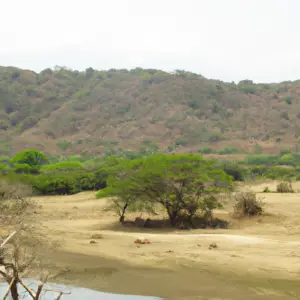
The unit covers more than 10,056 hectares and is located in Amula, Santa Teresa and Armería towns in the municipality of Manzanillo, and Tecomán, Coahuayana and Ixtlahuacán in the municipality of Tecomán. The area serves as an important refuge for a variety of biodiversity species, including mammals like margays, ocelots and jaguars, reptiles such as green iguanas and Crocodylus moreletii, and several bird species such as the jacama, Aphelocoma bairdii, Meyerornis crinitus, and several aquatic birds.
The environment of the La Briseida Conservation Unit is conditioned by its location in the transitional zone between the humid tropical forest of the Sierra Madre del Sur and the dry tropical forest of the Sierra Madre del Sur, which offers a rich and varied flora and fauna where the natural beauty and ecological balance makes it a unique and attractive place for visitors. The conservation unit has 3 visitor centers and offers different activities such as bird watching, hiking, picnics, camping, and educational talks about the flora and fauna of the region.
3. Balneario el Cortijo
Balneario el Cortijo is located in the city of Colima in the Mexican state of Colima. It is a natural thermal springs and spa resort located in a lush tropical oasis surrounded by mountains. The resort is known for its hot water baths, hydrotherapy pools, and natural treatments.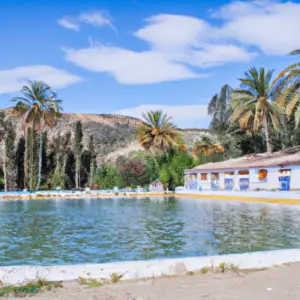
The main attraction of the resort is its thermal springs, which provide warm, sulfurous waters that are said to have therapeutic and healing effects.
The resort features a wide range of services and facilities, including an outdoor pool, a spa area with a hot tub, a restaurant and bar, and a variety of massage, body wraps, and treatments. The resort also provides a variety of activities, such as bike tours, horseback riding, and hiking.
4. Cathedral of Colima, Mexico
The Cathedral of Colima is the main church of the Roman Catholic Archdiocese of Colima, located in the Mexican city of Colima. It was built between 1727 and 1789, during the time of the Spanish colonization, and was consecrated in 1810. The cathedral has a simple Baroque style with elements of Neoclassicism.
It is one of the most important religious buildings in the state and has been declared an historical monument by the State of Colima.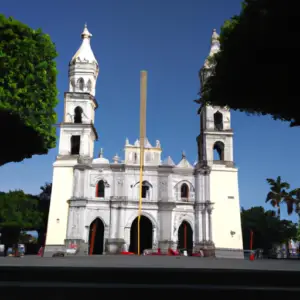
The cathedral features a large door which is flanked by two towers, one of which contains a large bell. Inside the building, one can find various religious objects, such as a statue of the Virgin Mary and a reliquary in the shape of a skull, which is said to contain the skull of Blessed Miguel Hidalgo.
There are also numerous works of art, such as a series of 16th century works from the Spanish period, and several more modern works, including canvases and sculptures. The cathedral also houses a large library with an extensive collection of books about religion and history.
Every year, the cathedral hosts numerous religious and cultural events, including the traditional celebrations for Corpus Christi and the patron saint festivities for Santo Domingo de Guzmán.
5. Government Palace of Colima
The Government Palace of Colima is located in the historic downtown of Colima city, in the Mexican state of Colima. It stands in front of Colima Cathedral and Plaza de Armas, and was constructed in 1893.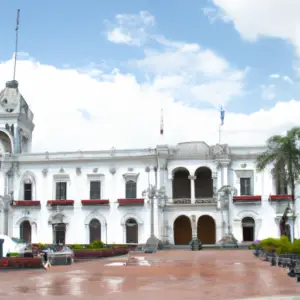
The Palace was built by Francisco del Villar y Castillejo, who served as governor of the state of Colima during the last two decades of the 19th century, thanks to the efforts of his wife, Rosalía de la Torre. The building was designed in the neoclassical style and is noted for its facade, made of cut stone and with a baroque adornment. The balustrades, balconies and windows are also covered in moulded adornment, coloured to capture the light.
The Palace stands three stories high and has a large courtyard in the middle. Its front facade is divided in five vertical sections, with three balconies and four large windows, as well as seven arches, and four doors (two main entrance and two main exit). Its main decorative element is the Trophy of the Colima flag, located on the second floor. The Trophy of the Colima Flag has been the official symbol of the state since the late 19th century, and stands in tribute to the heroic struggle of the Colima people during the War of Independence.
The Government Palace of Colima is a symbol of the State of Colima and is noteworthy as one of the most important historic and cultural sites in the region. The Palace has been declared a Cultural Heritage Site, in 2006, and is an important landmark of the city and the state.
6. Museo Regional de Historia
Museo Regional de Historia is a museum located in Colima, Mexico. The museum features a variety of exhibits on the culture, history, and natural environment that has existed in the region for centuries. The museum is divided into five main exhibitions: Pre-Hispanic Art, Colonial Art, Contemporary Art, Natural History, and Mexican History. Each exhibition provides visitors with a comprehensive look at the history of the area and its impact on society and the environment today.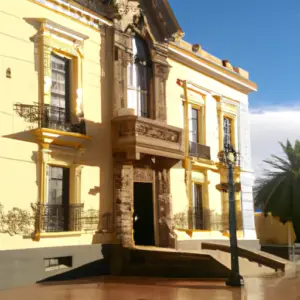
The Pre-Hispanic Art exhibition features a variety of artifacts from the pre-Hispanic period, including pottery, stone statues, jewelry, and other objects from the era. The Colonial Art exhibit displays a variety of artwork from the 16th and 17th centuries, including paintings and sculptures.
The Contemporary Art exhibit showcases a variety of modern art from Mexican and international artists. The Natural History exhibit features a variety of specimens, including birds, fish, reptiles, amphibians, and more. Finally, the Mexican History exhibit features a variety of artifacts, documents, and photographs that detail the history of the region and its impact on Mexican culture.
The museum also offers special activities, including workshops, guided tours, and lectures, as well as a book shop, café, and gift shop. Admission to the museum is free, and it is open Tuesday through Sunday from 10am to 6pm.
7. Ex Convento de San Francisco
The Ex Convento de San Francisco is a former Catholic convent located in the city of Colima, Mexico. It was built during the 16th century by Jesuit missionaries and is considered one of the most important colonial-era monuments in the city. The convent has served several purposes over the years, including a museum, a cultural center, and a venue for festivals and other events.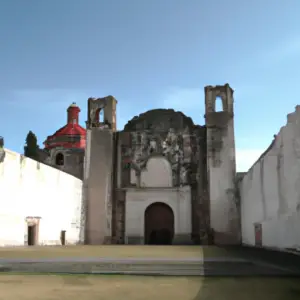
The main attraction of the site is its impressive main courtyard, which is adorned by beautiful tile mosaics and has a charming central fountain. The convent also contains two chapels, an interactive museum, a library, and a cloister with colorful stained glass windows.
The Ex Convento de San Francisco hosts a variety of cultural events throughout the year, such as an Annual Film Festival and the Colima Carnaval. Visitors to the site can also take advantage of guided tours that provide insight into the history of the complex and its architecture.
8. Plaza de Toros de Colima
Plaza de Toros de Colima, commonly known as La Maestranza, is one of the most famous bullfighting rings in Mexico and Latin America. Located in the historic center of the city of Colima, this bullfighting arena was built in 1918 under the direction of Luis Dávila.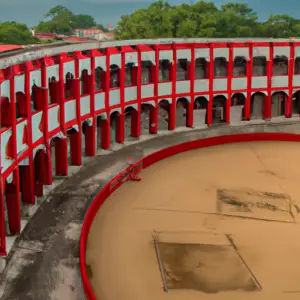
It has a seating capacity of over 7,800 and is one of the most important venues for bullfighting in the country, hosting some of the most well-known bullfighting festivals throughout the year. In addition, the plaza is also used for concerts and other live performances, making it a popular destination for both locals and tourists.
9. Monument to Emiliano Zapata
The Monument to Emiliano Zapata is located in the city of Colima, Mexico. It is a bronze statue that was created to honor the Mexican revolutionary hero, Emiliano Zapata. The statue was made in 1971 and unveiled on August 10, 1971.
The monument was created by renowned Mexican artists Alfredo Zalce and Manuel Vizcarra. It features a bronze cast of the hero in his iconic “Aurora” sombrero and small machete.
The bronze statue stands 8 meters tall and weighs 5 tons. It is situated in the plaza of the same name in Colima. The plaza is a popular gathering place for locals and tourists alike. The plaza faces the city’s main governmental building and on the fourth side of it is a monument dedicated to Cadetes de Colima, a group of people who fought in World War II.
10. Santa Lucia River Park
Santa Lucia River Park is located in Colima, Mexico. The park is part of the Xochiaca biodiversity reserve and is home to a variety of plant and animal species. The park covers an area of over 25 hectares, with expansive meadows and a large lake. The lake is home to several species of fish and is a popular spot for recreational fishing.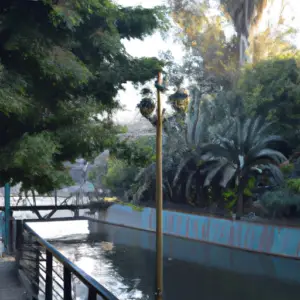
The park’s meadows are used for horseback riding and picnics, and the park also contains several trails for hiking and mountain biking.
Visitors to the park can also take in the views from several lookout points, and can enjoy a range of activities and recreational facilities, such as kayaking and canoeing. There is also a butterfly garden and a variety of native plants species for visitors to enjoy.
Search Posts
Latest posts
-
4 Mar, 2024
Can I accidentally miss the in-flight food?
Popular posts
-
5 Mar, 2024
Why prohibit engine braking?
-
5 Mar, 2024
How to avoid drinking vodka?